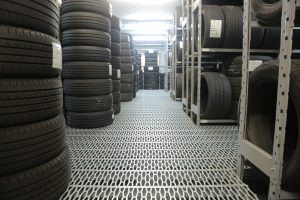Do car tires have inner tubes?
 The inner tubes of car tires are a circular tube-like structure that, when filled with air, inflates like a balloon. They can be made of a variety of materials, including rubber, synthetic rubber, and plastics.\
The inner tubes of car tires are a circular tube-like structure that, when filled with air, inflates like a balloon. They can be made of a variety of materials, including rubber, synthetic rubber, and plastics.\
Bicycles and motorcycles have smaller inner tubes, but heavier vehicles have larger inner tubes. The industrial-grade pneumatic tires are sturdy and hefty, with excellent off-road performance.
Inner tubes are no longer used in modern car tires, and haven’t been since the development of synthetic rubber compounds.
What is a Tubeless tire?
Tubeless tires, as the name implies, do not have a tube. The tire is constructed in such a way that it can hold air on its own. The tire has an airtight halo or chloro-butyl lining on the interior. The membrane, when combined with the airtight junction between the tire and the wheel, provides a container that stores the tire’s air.
Tubeless tires were invented in 1947 as a way to alleviate the excessive expense of oil. Tubeless tires contributed to the vehicle’s weight reduction, resulting in significant fuel cost savings.
Is it better to have tube tires or tubeless tires?
Tubeless rims and tires are lighter, with fewer parts, no tube, less friction, and less heat. Tubeless tires are superior to tubed tires because a puncture in a tubeless tire may be repaired.
The following are some of the benefits of using tubeless tires in your vehicle:
A minimum number of punctures.
Did you know that even if your tire wall is unbroken, tube tires might be punctured? When the tube tire is pinched between the wheel rim and the outer tire wall, it might puncture. Tubeless tires do not have this problem because there is no tube in between to get pinched.
Improved Traction
Tubeless tires for bikes and cars provide significantly superior traction than tube tires for riding or driving in rough and harsh terrain. Tubeless tires for vehicles and motorbikes have the advantage of being able to run at lower tire pressures, allowing for more ground contact. Furthermore, on rocky terrain, this allows the tire to partially wrap around rocks and other objects, improving traction.
Implementing a Liquid Sealant
Tubeless tires are filled with a specially formulated liquid sealant that makes them airtight. As a result, anytime a sharp object punctures a tubeless tire, the sealant pours out, fills the hole, and then dries, successfully sealing the pierce.
Reduces Weight
All tubeless tires include a sealant and inflation valve, which can weigh up to 400 grams apiece and counterbalance the weight savings. When compared to tube tires, the net effect is always a little less. The vehicle’s fuel economy improves as its weight decreases.
Let the air out slowly.
Even though the chances of a puncture in tubeless tires are slim, if one does occur, tubeless tires will not leave you defenseless in the middle of the road. If a tubeless tire develops a puncture that cannot be repaired with liquid sealant, the air slowly leaks out, allowing the driver enough time to pull over to the side of the road.
